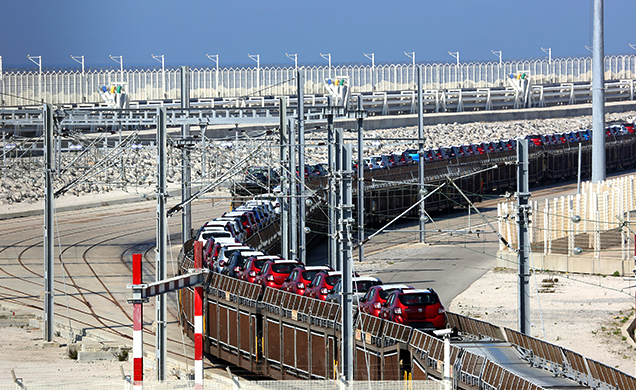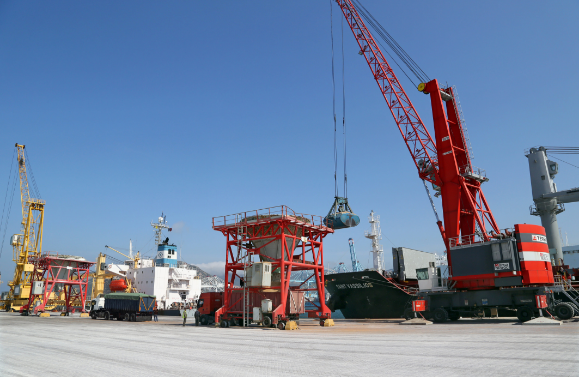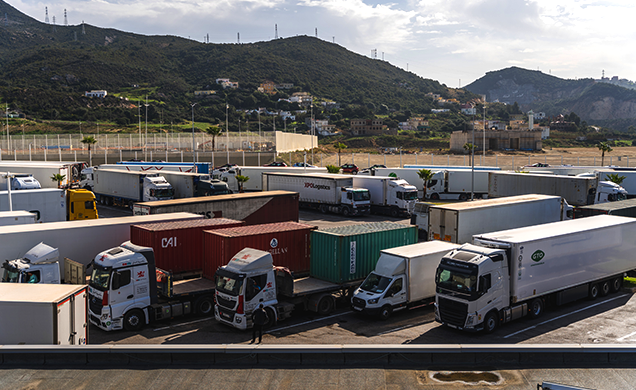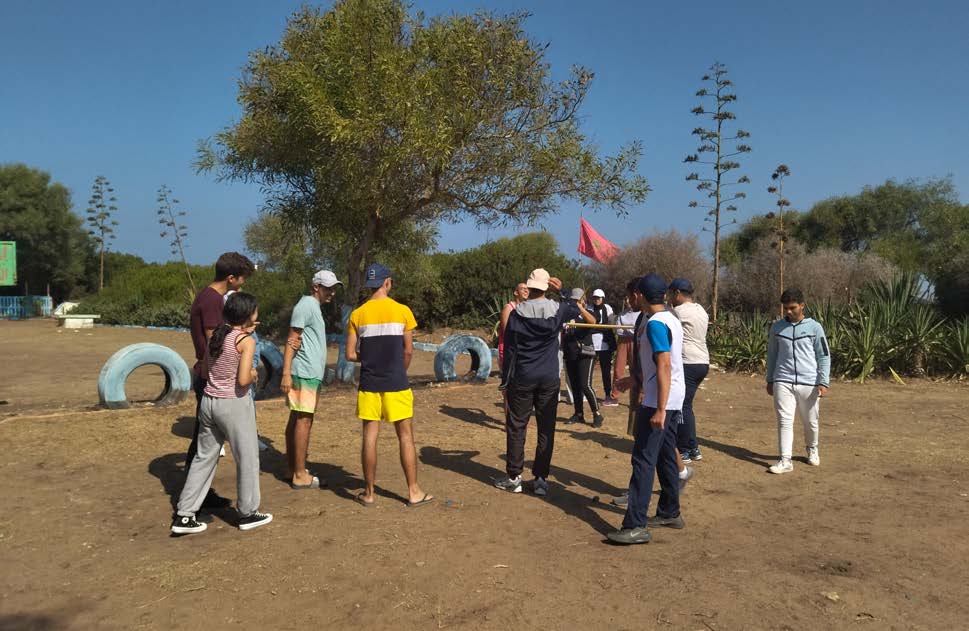Management and operation of Tanger Med Port Complex
Leader in Africa and the Mediterranean, Tanger Med Port Complex is composed of 3 ports developed over a 1000 HA area: Tanger Med 1 port, Passenger and Ro-Ro port, and Tanger Med 2 port.
Activities carried out within the port complex:

Container activity
Tanger Med Port includes 4 terminals dedicated to container activity (transshipment, import, export) operated by APM Terminals, Eurogate, and Tanger Alliance. It has a nominal processing capacity of 9 million TEU containers.
In 2023, Tanger Med port handled 8.6 million TEU containers.

New vehicle activity
The car carrier terminal has an annual processing capacity of 1 000 000 new vehicles (transshipment, import, export) and is divided into two vehicle terminals: the Renault Vehicle Terminal (TVR), with a surface area of 13 Ha, and the Common User Vehicle Terminal, with a surface area of 7 Ha.
The car carrier terminal processes export trains from the Renault Melloussa plant and the STELLANTIS plant in Kenitra.
In 2023, 578 446 new vehicles were handled.

Railway activity
The railway terminal has an area of 10 ha and 3 tracks with a total length of 800 ml and a storage track. It offers a network of connections to the main cities of the Kingdom for the routing of new vehicles from the Renault and Stellantis factories, as well as hydrocarbons and containers.
The rail terminal has an annual capacity of 400 000 TEU containers.

Hydrocarbon activity
Operated by HTTSA, the hydrocarbon terminal has an area of 12 ha and a capacity of 15 million tons (in Entry/Exit) dedicated to the storage, bunkering, transshipment, and import of refined products.
In 2023, 9.8 million tons of hydrocarbons were treated.

Miscellaneous general operations
Covering a total area of 5 hectares, the general cargo terminal is dedicated to the processing of import/export traffic primarily related to industrial businesses located in the northern region. It has a processing capacity of 800 000 tons of various goods and processed 581 042 tons in 2023.

Ro-Ro activity
The Passenger and Ro-Ro Port has a processing capacity of 700 000 trucks per year. Spanning over 30 hectares, it is equipped with 8 berths, access and border inspection areas for freight units, pre-boarding areas, and dedicated areas for processing imports and exports.
In 2023, 477 993 trucks were handled at Tanger Med Port. The Ro-Ro activity connects Tanger Med to Spain, France, and Italy.

Passenger activity
The Passenger and Ro-Ro Port has a capacity of 7 000 000 passengers per year. It has 8 berths designated for the transit of passengers, vehicles, and freight units, as well as two access and border control areas, boarding zones, and an intermodal ferry terminal. It boasts direct connections to Spain, France, and Italy, and handled 2.7 million passengers in 2023.
As the leading port in Africa and the Mediterranean, Tanger Med is committed to integrating the top 20 platforms worldwide.
The operation of the terminals, as well as all port activities, is carried out under concession contracts by world-renowned operators. Tanger Med Port is home to some of the world’s largest shipping lines (Maersk, CMA CGM, Hapag Lloyd, etc.) as well as port leaders such as APM TERMINALS and EUROGATE.







For more information





